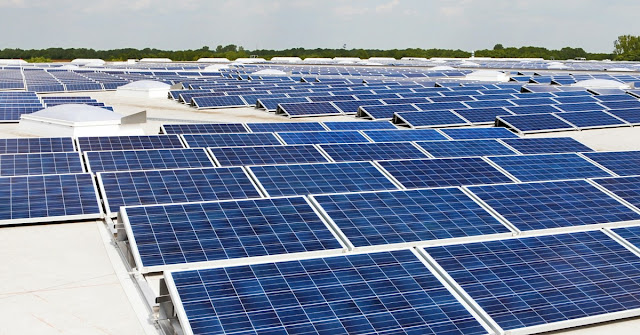What are the Carbon Market Standards ?
Specific carbon market standards, market trends, and additional global case studies to give a comprehensive overview of the Voluntary Carbon Market (VCM) and its functioning:
Carbon Market Standards
Carbon credits are generated and verified under standards, which ensure credibility, additionality, transparency, and permanence. These standards are critical for ensuring that carbon offset projects are real, measurable, and verifiable.
1. Verified Carbon Standard (VCS)
- Description: One of the most widely recognized carbon offset standards.
- Mechanism: Projects must demonstrate that carbon reductions are real, measurable, and additional.
- Sectoral Applications: Renewable energy, agriculture, forestry, waste management, and carbon capture.
- Example: A renewable energy wind farm in India receiving funding based on the VCS methodology.
- Website: https://verra.org/
2. Gold Standard
- Description: A robust standard focusing on environmental integrity and social co-benefits.
- Scope: Renewable energy, forestry, water projects, and social development.
- Example: The Amazon Rainforest Reforestation Project follows the Gold Standard framework to ensure projects align with SDGs.
- Co-benefits: Promotes social equity, local employment opportunities, and sustainable development.
- Website: https://www.goldstandard.org/
3. Clean Development Mechanism (CDM)
- Description: Established under the Kyoto Protocol, CDM allows developed countries to meet their climate targets by funding reduction projects in developing nations.
- Examples: Renewable energy projects and energy efficiency in developing economies.
- Mechanism: Projects must demonstrate that reductions are additional (wouldn't have happened without financial support).
4. Nature-Based Solutions (NBS) Standards
- Focus: Projects that integrate nature, such as reforestation and afforestation, wetland restoration, or soil sequestration.
- Example: Reforestation projects under NBS standards aim to capture atmospheric CO2 through natural ecosystems.
5. Social Carbon Standards
- Focus: Measures the social, environmental, and economic impact of carbon offsetting projects.
- Aim: Address the social equity aspects of renewable energy and reforestation projects by focusing on vulnerable communities.
Current Market Trends in the Voluntary Carbon Market
1. Rise in Demand for Nature-Based Solutions
- Projects focused on afforestation, reforestation, and urban greening are in high demand to combat climate change.
- Investor focus is shifting toward projects that align with biodiversity conservation.
2. Corporate Offsets and Net-Zero Commitments
- Many multinational corporations are committing to net-zero goals, directly driving demand for carbon credits.
- Examples include Google, Microsoft, and Amazon, which invest in renewable energy and forestry credits to achieve carbon neutrality.
3. Technological Innovation & Carbon Capture Expansion
- Carbon capture technologies (e.g., direct air capture and industrial CCS) are advancing rapidly and contributing more to voluntary carbon credits.
- These technologies are expected to scale up with technological development and policy support.
4. Integration with ESG (Environmental, Social, Governance) Frameworks
- Many financial institutions integrate carbon credits as part of their ESG investment portfolios.
- This trend has led to higher financial flows into carbon projects.
5. Regulatory Clarity & Market Mechanisms
- Governments are beginning to create clear regulatory mechanisms for voluntary carbon pricing.
- Carbon pricing instruments (like tax credits, cap-and-trade schemes, and credit offsets) are being implemented to complement market solutions.
6. Concerns about Additionality, Permanence, and Verification
- Projects must demonstrate they are additional (caused by the market intervention) and have permanence (long-term carbon storage).
- New technologies and third-party verifications are addressing these challenges to ensure credibility.
Global Case Studies: Extended Examples
Here are a few more detailed examples of global VCM projects across multiple industries:
Case Study 7: Solar Photovoltaic (PV) Power - Latin America
Project Example: Sustainable Energy for the Grid (SE4G)
- Location: Latin America (Brazil, Argentina, and Chile)
- Sector: Renewable Energy
Objective:
The initiative uses solar PV installations to replace fossil fuel-based grid power and generate voluntary carbon credits.
Mechanism:
- Projects focus on providing solar energy access to rural and underserved communities.
- Carbon credits are generated by calculating emissions avoided by displacing coal or natural gas power.
Outcomes:
- Displaced over 300,000 metric tons of CO2 annually.
- Improved energy access for over 200,000 people in rural areas.
Challenges:
- Financing challenges.
- Geographic variability in solar resource availability.
Case Study 8: Blue Carbon Projects
Focus Area: Coastal Mangrove Conservation
- Region: Southeast Asia (Indonesia & the Philippines)
- Mechanism: Mangrove ecosystems capture CO2 by storing it in biomass and coastal sediments.
- Co-benefits: Protects coastal communities from flooding and enhances fisheries.
Outcomes:
- Over 500,000 metric tons of CO2 sequestered through mangrove restoration.
- Strengthened coastal resilience through local reforestation initiatives.
Case Study 9: Carbon Credits from Urban Waste Management in Africa
Initiative Example: Renewable Waste to Energy Projects in Nigeria
- Projects turn waste into biogas energy solutions.
- Carbon Outcome: Substitution of conventional power generation with biogas.
Challenges:
- Waste collection issues.
- Community participation & education for sustained success.
Opportunities & Challenges for the Carbon Market
Opportunities:
- Technological Innovation:
- Direct air capture, carbon mineralization, and advanced renewable energy are key investment opportunities.
- Biodiversity Co-benefits:
- Combining carbon offsetting with biodiversity conservation can address multiple climate goals.
- Policy Mechanisms:
- Clear international carbon pricing mechanisms could scale up voluntary market flows.
- Direct air capture, carbon mineralization, and advanced renewable energy are key investment opportunities.
- Combining carbon offsetting with biodiversity conservation can address multiple climate goals.
- Clear international carbon pricing mechanisms could scale up voluntary market flows.
Challenges:
- Measuring Additionality & Permanence:
- Ensuring carbon credits represent real climate benefits.
- Market Fragmentation:
- Lack of harmonization among countries’ carbon offset programs leads to inefficiencies.
- High Transaction Costs:
- Verification and auditing of carbon credits can be expensive, especially for small projects.
- Ensuring carbon credits represent real climate benefits.
- Lack of harmonization among countries’ carbon offset programs leads to inefficiencies.
- Verification and auditing of carbon credits can be expensive, especially for small projects.
Conclusion
The voluntary carbon market is a complex ecosystem driven by technological innovation, corporate commitments, and policy incentives. Standards like Gold Standard, VCS, and CDM ensure credibility while addressing challenges like additionality, permanence, and co-benefits. Additionally:
- Technological advancements, like carbon capture and direct air capture, promise scalable climate solutions.
- Social equity can be amplified through co-benefits by aligning carbon markets with community development.
The future of voluntary carbon markets will depend on transparent mechanisms, innovative solutions, and collaborative efforts across sectors.






Comments
Post a Comment